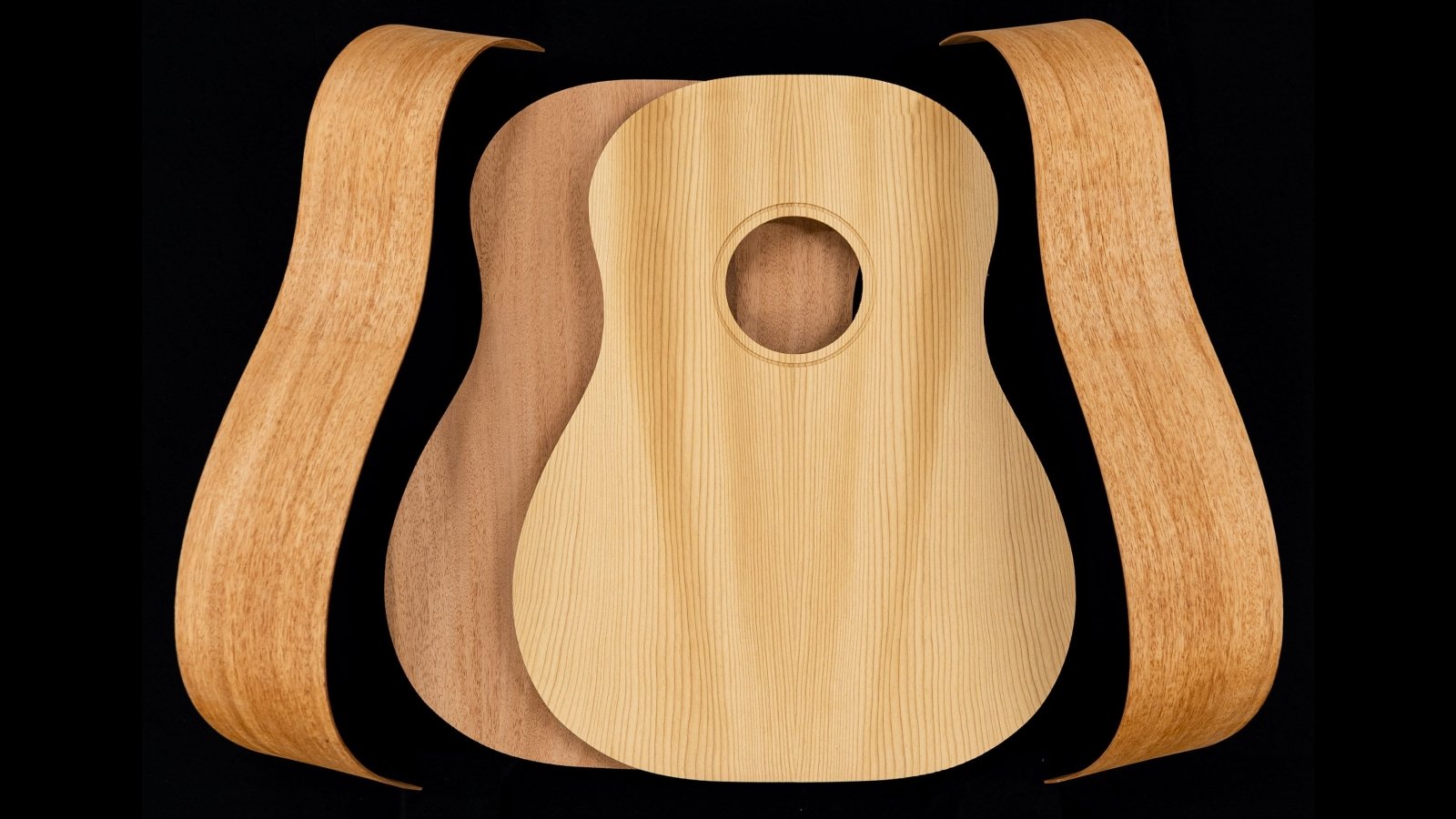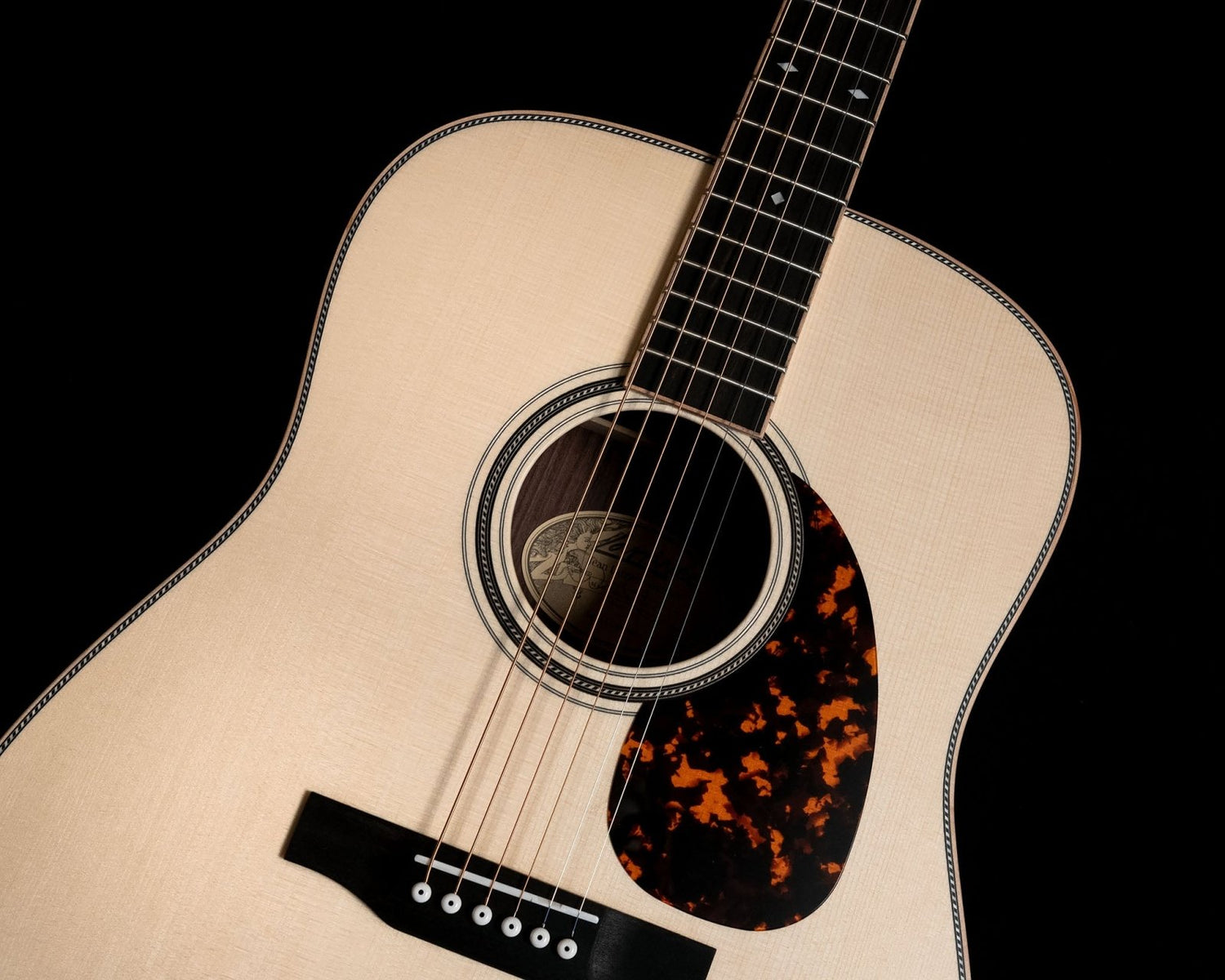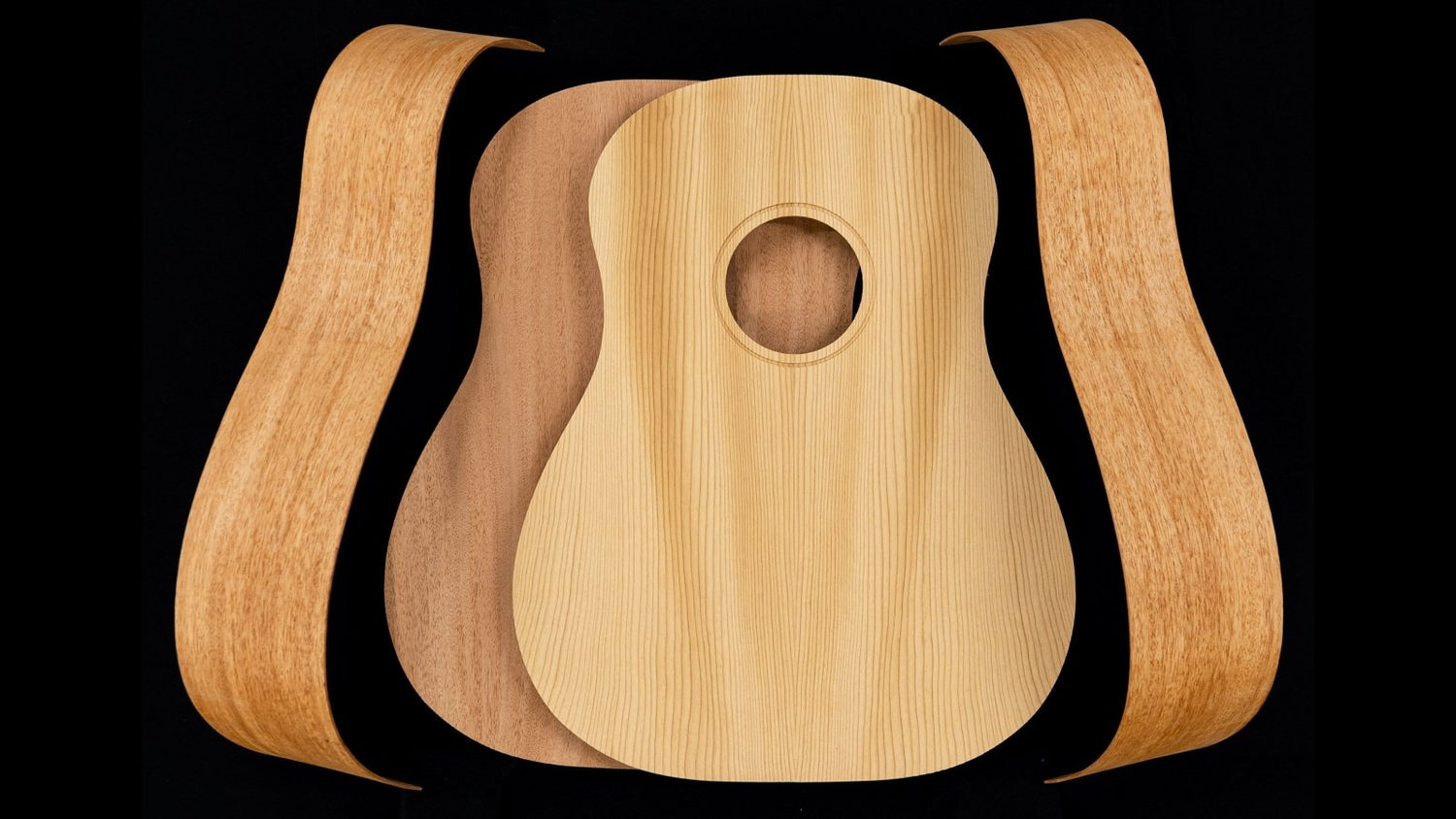Introduction:
The acoustic guitar, a timeless instrument cherished for its warm and resonant sound, owes much of its tonal magic to the carefully chosen woods that craft its body. In this exploration, we delve into the enchanting world of tone woods and unravel the symphony they create in collaboration with six strings.
The Soundboard’s Command:
At the heart of an acoustic guitar lies the soundboard, often made from spruce or cedar. This thin, resonant surface is the primary driver of the guitar’s tone, responsible for projecting the vibrations produced by plucking or strumming the strings. Spruce, with its stiffness and responsiveness, tends to offer a brighter and articulate sound, while cedar provides a warmer and darker tonal palette.
Back and Sides: The Supporting Cast:
While the soundboard takes the lead, the back and sides of the guitar play a crucial supporting role. Woods like rosewood, mahogany, and maple are commonly used for crafting these components. Rosewood, known for its rich overtones, contributes warmth and complexity, making it a favorite for many acoustic guitar enthusiasts. Mahogany, on the other hand, provides a focused and balanced tone, while maple imparts brightness and clarity.
Neck and Fingerboard: Sustaining the Melody:
The neck and fingerboard, usually made from mahogany or rosewood, influence the sustain and playability of the guitar. A well-constructed neck enhances the instrument’s stability, allowing for comfortable fretting and optimal resonance.
The Marriage of Woods:
The art of selecting and pairing different woods is akin to composing a symphony. Luthiers like Larrivee, Northwood and Eastman carefully combine woods to achieve a harmonious balance of tonal characteristics. The choice of bracing patterns, another crucial factor, influences how the soundboard vibrates, shaping the guitar’s overall voice.
Environmental Impact and Sustainability:
In recent times, the music industry has become increasingly conscious of the environmental impact of tone wood harvesting. Sustainable practices and alternative materials are gaining traction to ensure the future availability of these precious resources.
Conclusion:
The sound of an acoustic guitar is a delicate dance of woods, strings, and craftsmanship. Each tonewood contributes its unique signature to the instrument’s voice, making the acoustic guitar a canvas for artistic expression. As we continue to explore and appreciate the nuances of tone woods, we deepen our understanding of the instrument’s timeless allure and enduring resonance.





